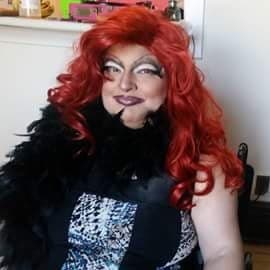The Cloud of Unknowing
Reflections on a strange encounter and the theological thoughts that followed…
“Do you read the Bible?” asked the stranger in front of me. Odd questions from random strangers are a regular facet of my life given that I navigate the world in a chair, so I responded without thinking: “Yes I do.”
The stranger then directed me to read the passage in Luke 9:34. “It’s from the Transfiguration,” he said. Before I knew what had hit me, he left as suddenly as he had come and I was left trying to make sense of what had just happened. Following the encounter I consulted my Bible to find out what this piece of text was that the stranger insisted I read. It was: “While he was saying this, a cloud came and overshadowed them; and they were terrified as they entered the cloud.” (NRSV).
What on earth? Trying to wrestle some significance from the text I started looking at the previous verses in chapter 9. The writer tells us that the disciples Peter, James, and John have gone up to the mountain with Jesus to pray. Verses 29-31 state: “And while he was praying, the appearance of his face changed, and his clothes became dazzling white. Suddenly they saw two men, Moses and Elijah, talking to him. They appeared in glory and were speaking of his departure, which he was about to accomplish at Jerusalem.”
Verse 31 is unique to the Luke’s account of the Transfiguration. Various commentators have mentioned that the author of Luke deliberately places Jesus’ glory in the context of his crucifixion with the insertion of this verse. Suffering as a prerequisite to glory? That’s a bitter pill to swallow. Even for Peter. The text states that just as Moses and Elijah were leaving, “Peter said to Jesus, ‘Master, it is good for us to be here; let us make three dwellings, one for you, one for Moses, and one for Elijah’-not knowing what he said (v.33).”
“Not knowing what he said.” Christians find all kinds of ways to shield themselves from the reality of suffering. A few weeks ago, a young woman engaged me in conversation when she saw me reading a book on homiletics and she proceeded to ask me if I was a Christian. I replied in the affirmative. Over the course of the conversation it became clear that this young woman wanted to pray for my physical healing. Her theology had convinced her that Jesus had suffered on the cross so that I didn’t have to.
Sitting there in this increasingly awkward and dehumanizing encounter I was struck by the fact that as distorted as her theology was, that she wasn’t afraid to make a large request of God. It never occurred to her that God did not have the power or would not want to answer her prayer. As I was sitting there, trying to glean some valuable insight from an event I might otherwise dismiss, I remember thinking that I wished I could trust God as implicitly as this young woman appeared to do. However, the more I thought about it, the more I found her faith and trust lacking. The more I found it to be too small.
According to Donald J. Luther: “In the eastern church the transfiguration is thoroughly cosmic and is understood as a foretaste of the transfiguration of all creation in Christ. For the fathers of the early church, the transfiguration became a mystical symbol of the transformation of this world and the world to come.” [1]
In light of that theme, what I should have said to that young woman, in retrospect, was:
“You want to pray for me? Pray that the people who currently only see me as something to be fixed, as a mistake, will see the image of God in me.
Pray that people will see that God can use me, not in spite of, but because of, my disability.
Pray for the transformation of the structures and systems that keep me under-unemployed and in poverty.
Pray that there be more people like me who have the ability to lead full and rich lives not as a result of changed bodies and minds, but as a result of changed public perceptions.
Pray that there might be more representation of people with disabilities in the public sphere, so that we are no longer invisible, and so that we don’t feel so alone.
Pray that God will transform the world through the presence of people with disabilities.
Pray that the suffering that so many of us experience at the hands of others might be redeemed, for the good of all.”
That seems like a petition worthy of a cruciformed God.
Gladiola originally hails from Paraguay, and currently resides in Winnipeg. She was raised in the Mennonite fold and these days identifies as an Anglo-Menno (Anglican Mennonite). Her hobbies include: eating dessert first, discussing contentious topics, and collecting dust. Besides being a polyglot and a member of a stupidly large extended family (90+ first cousins), Gladiola finds plenty to do, working towards living her best life.
[1] Donald J Luther, “The Mystery of the Transfiguration: Luke 9:28-36 (37-43),” Word & World 21, no. 1 (2001): 97-98, http://wordandworld.luthersem.edu/content/pdfs/21-1_therapy_theology/21-1_luther.pdf.
